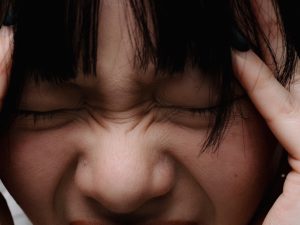
Understanding seasonal depression beyond winter
When most people hear “Seasonal Affective Disorder,” they think of cold weather, gray skies, and the low energy that can come with winter. That understanding is valid. The most common form of SAD is linked to reduced sunlight during fall and winter, which can disrupt serotonin and melatonin levels. These are the chemicals that help regulate mood, energy, and sleep.
I lived in Seattle for several years, where SAD was a known and shared experience. Light boxes were on bedside tables. We threw on raincoats—umbrellas were just kind of annoying to keep up with—and dragged ourselves out into the low clouds and restless drizzle. I went for drizzly hikes, biked around the neighborhoods, frequented coffee shops, and enjoyed a nice stout beer in some dark, cozy pub. It was hard, but it was expected. There was a rhythm to it, and a collective understanding that the season might feel heavy, but that it would pass.
What often doesn’t get discussed is how depression can surface during the opposite season. Not everyone feels better when the sun comes out and the days get longer. For some, summer is when things start to unravel.
Summer SAD Is Real, Even If It’s Less Common
Summer-pattern Seasonal Affective Disorder (often called Summer SAD or reverse SAD) is less common but well documented. It typically begins in late spring or early summer and tends to show up differently than winter SAD.
Instead of fatigue and craving carbs, Summer SAD often includes:
- Trouble sleeping
- Restlessness or agitation
- Anxiety
- Reduced appetite
- Mood changes, including irritability or emotional disconnection
Seasonal Affective Disorder is not a separate diagnosis. It’s considered a specifier under major depressive disorder or bipolar disorder, used when symptoms reliably follow a seasonal pattern. These shifts can be difficult to talk about when they occur during what is culturally presented as the “happiest” time of year.
In the Atlanta Area, Heat Can Be a Hidden Trigger
In Georgia, and especially in the Atlanta area, summer heat is more than uncomfortable. Temperatures often stay in the 90s, with humidity that can make even short walks feel exhausting. For many of my patients, this leads to an increase in isolation, disrupted sleep, and emotional fatigue.
One phrase I hear often is, “I’m just too uncomfortable to go out in this heat, and I start to hide out and isolate.”
Here are some of the specific stressors I see contributing to summer depression:
Less time outdoors
Hot, humid days push people indoors. Time in nature, movement, and spontaneous social interaction all decrease.
Poor sleep quality
High overnight temperatures, early morning sun, and inconsistent air conditioning interfere with sleep. Even small disruptions in sleep can worsen mood symptoms.
Dehydration and physical fatigue
Even mild dehydration affects concentration, motivation, and patience. The body must work harder to cool itself, which creates additional fatigue.
Body image discomfort
Wearing summer clothing or attending events that emphasize appearance can increase distress for those already struggling with body image or eating concerns.
Medication and mood sensitivity
Some psychiatric medications—particularly stimulants, SSRIs, antipsychotics, and tricyclic antidepressants—can impair heat regulation. People with mood or anxiety disorders may also experience increased sensitivity to environmental stressors like heat and light.
Yes, There’s Evidence
A 2024 article in Psychology Today reported that while Summer SAD affects a small percentage of the population (about 0.1%), many more experience mood shifts triggered by heat and disrupted routines. These symptoms often look more anxious or agitated than the sluggishness seen in winter SAD.
A recent study from the RADAR-MDD project used wearable devices and daily mood tracking to monitor people with depression. The data showed a clear seasonal pattern: symptoms like irritability, emotional dysregulation, and fatigue were more likely to peak during spring and summer, especially in those with existing mood disorders.
Some patients with bipolar disorder also report seasonal patterns, though the presentation may differ. In these cases, summer may bring an increase in agitation, impulsivity, or racing thoughts rather than classic depressive symptoms. If your mood tends to shift quickly or feel overstimulated during certain seasons, it’s important to bring that into your mental health conversations.
A Closer Look: How Heat Affects Brain and Body
Heat is more than a comfort issue. It affects the systems that help regulate emotion, energy, and decision-making. When your body is under stress, your capacity for emotional regulation tends to decrease.
The nervous system stays activated
High temperatures increase heart rate and blood flow. This state of internal strain can lower your threshold for stress and make you more reactive or fatigued.
Circadian rhythm disruptions
Heat and bright light early in the morning can shift sleep cycles and melatonin production. Poor sleep throws off mood-regulating chemicals like serotonin and dopamine.
Medication-related vulnerability
Certain psychiatric medications interfere with the body’s ability to sweat or stay hydrated. This makes heat feel more extreme, and emotional reactions more difficult to manage.
What Can Help
If you tend to feel emotionally off in summer, there are strategies that may help:
- Use a light box in the morning to support circadian rhythm and energy regulation, especially if you’re avoiding outdoor exposure.
- Plan physical activity early in the day or indoors. Swimming, yoga, and gentle cardio in air-conditioned spaces are all helpful.
- Prioritize sleep. Cooling sheets, blackout curtains, and white noise can improve quality even if sleep duration is shorter.
- Stay hydrated and eat consistent meals. Consider electrolyte supplements if you’re sweating more than usual.
- Keep a cooling toolkit nearby: portable fans, cooling towels, and quick cold showers can help with heat sensitivity.
- Reduce screen overload. Replace scrolling with grounding activities like music, reading, puzzles, or creative work.
- Notice patterns. If symptoms appear every year at the same time, track them. Bringing that information to your provider can lead to more tailored treatment.
It’s Okay If Summer Doesn’t Feel Easy
Some people feel guilty when summer doesn’t bring relief or joy. If you’ve ever felt like something must be wrong with you because others seem to thrive this time of year, you are not alone.
Summer-pattern depression is real. It can show up quietly, through irritability, sleep changes, or a sense of disconnection that doesn’t match the season. In Georgia’s heat and humidity, it is not unusual for symptoms to worsen when the temperature rises.
There are treatments, supports, and simple tools that can help. You don’t need to push through the season alone.
If this sounds familiar, I’m here to help.
Book a consultation today and we’ll create a plan that helps you feel better—on your own terms, in every season.








